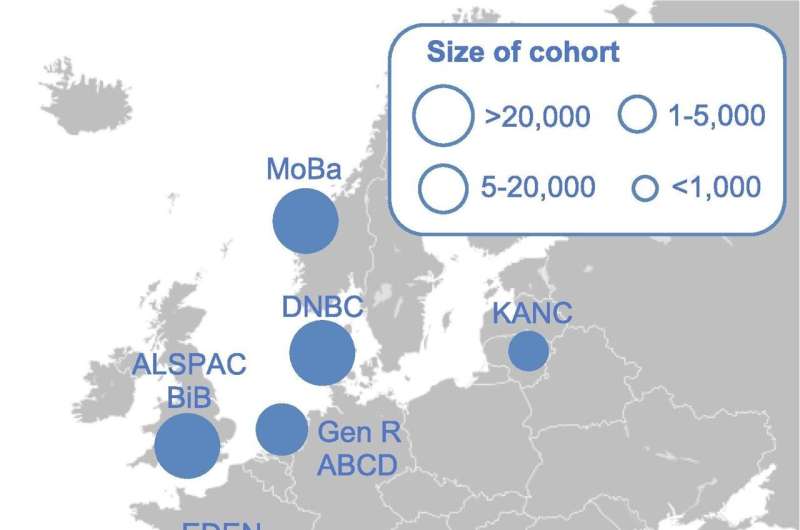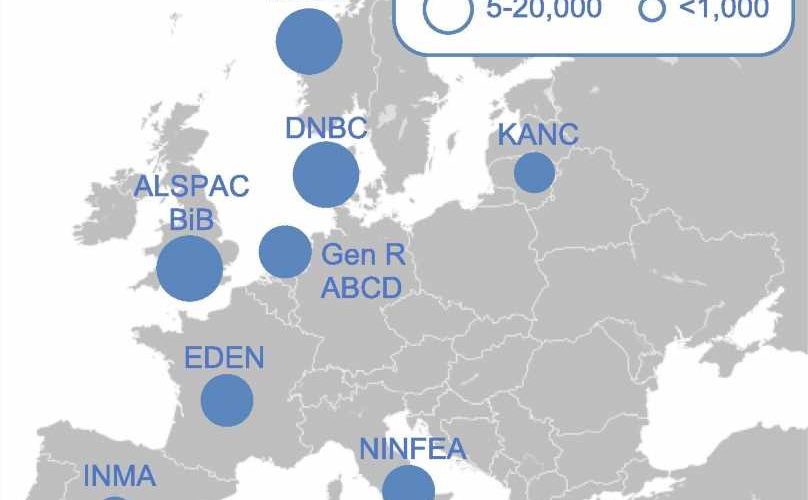Residential green space is associated with higher birth weight

There is scientific evidence that maternal exposure to natural environments supports healthy fetal growth. However, study results up to date had been heterogeneous across regions and there is very little research on the effects of blue spaces such as rivers, the sea or lakes.
A new study involving a team from the Barcelona Institute for Global Health (ISGlobal), an institution supported by the “la Caixa” Foundation, assessed the associations between maternal exposure to green and blue spaces during pregnancy and birth outcomes in 11 birth cohorts from nine European countries, including Spain.
The results of the study, published in the journal Environment International, indicate that proximity to residential green space is associated with higher birth weight and lower odds of having a small-for-gestational-age baby, or SGA, as newborns whose birth weight is less than or equal to the 10th lower percentile are called.
In contrast, greater distance to residential green space is associated with lower birth weight and higher odds of SGA. The results showed almost no associations for accessibility to green spaces and exposure and accessibility to blue spaces.
“A healthy fetal growth can greatly reduce the risk of adverse health outcomes, both early and later in life,” says Maria Torres, first author of the study. “For example, babies with low birth weight or being SGA could have an increased risk of growth impairment, lower IQ and premature death in childhood, as well as obesity, cardiovascular disease and diabetes in adulthood.”
This study, part of the LifeCycle project, was based on a sample of 69,683 newborns, with an average birth weight of 3.42 kg, of whom 6.6% were classified as SGA. For each participant, seven indicators of residential exposure to natural environments were calculated: surrounding green space within 100, 300 and 500 meters of the household—calculated using the Normalized Difference Vegetation Index (NDVI)-, distance to the nearest green space, accessibility to green space, distance to the nearest blue space and accessibility to blue space.
The research team also evaluated the potential effect modification by socioeconomic status (SES) and region of Europe. The results indicate stronger associations between residential green spaces and higher birth weight for participants with lower educational levels, from more deprived areas, and residing in the Northern European region.
The results of this study are in line with previous research from various regions around the world. An increasing number of studies have reported associations between maternal exposure to green spaces and higher birth weight. However, most of these studies were conducted in a single country with a particular climate and vegetation type, and estimates of the effect differed from region to region.
“Capitalizing on data from 11 birth cohorts across Europe allowed us to assess, for the first time, this association in different countries and shed light on the regional role in this issue”, explains Payam Dadvand, ISGlobal researcher and senior author of the study.
The research involved people from the Netherlands, United Kingdom, Denmark, France, Spain, Lithuania, Norway, Italy and Greece. According to the authors, the results of this study could support the implementation of policies to promote natural environments in our cities, starting with the most disadvantaged areas. “Having accessible natural environments in our cities could benefit our children’s health from before birth and beyond, and this should be taken into account by urban designers,” concludes Maria Torres.
More information:
Maria Torres Toda et al, Exposure to natural environments during pregnancy and birth outcomes in 11 European birth cohorts, Environment International (2022). DOI: 10.1016/j.envint.2022.107648
Journal information:
Environment International
Source: Read Full Article
